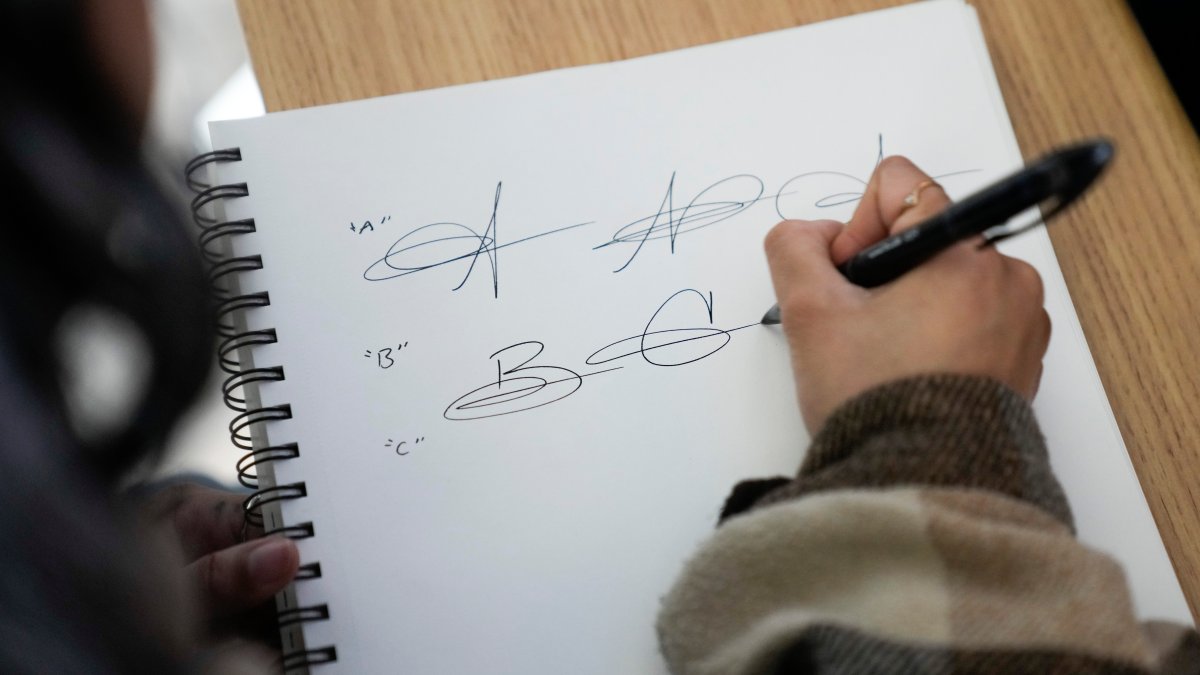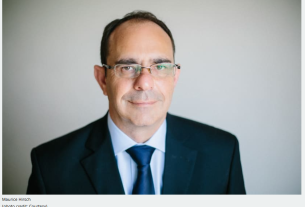Doctors, lawyers, celebrities: There’s a new cosmetic surgery, of sorts, that has snared them all.
By that, we mean handing over money to hire a calligrapher for a fresh take on writing one’s own name in cursive. With a pen or another writing implement. On paper.
A corner of TikTok, Instagram and other social media is dedicated to signature design, and it’s keeping practitioners busy.
Priscilla Molina in Los Angeles does a minimum of 300 custom signatures a month, offering packages that include up to three ways to sign, limitless drafts or a new set of initials. She charges between $10 to $55, using the motto: “Where originality meets legacy.”
Molina said her Planet of Names clients include professionals and famous people in search of new ways to sign autographs, though her lips are sealed on the identities of high-profile signature seekers.
In general, Molina said, people come to her for signature makeovers for a simple reason: They’re tired of the way they sign their names.
“They’re not happy with their signatures. They don’t relate to who they are. They don’t give the message they want to convey to the world,” she said.
Molina and other signature doctors promise a range of styles. For Molina, that includes but is not limited to elegant, subtle, dramatic, sharp, classic, artistic, condensed, curvy, legible — or even illegible.
AP Photo/Ashley Landis
She and others offer templates and stencils, encouraging clients to practice their newfound John Hancocks, with results in a short couple of weeks if they put in the time.
John Hancock, for those light on U.S. history, was president of the Continental Congress and affixed his large and flamboyant signature to the Declaration of Independence when it was signed in 1776.
Fast forward to 2023, where — despite the rise of digital alternatives — signatures, to some, still matter.
Sonia Palamand in St. Louis, Missouri, began noodling with calligraphy in middle school. She drums up business on TikTok, charging $35 for three signatures while promoting herself in videos that have her designing free of charge for select commenters.
“It’s a way for people to reinvent themselves. The way that you present yourself on the outside can affect how you see yourself on the inside. I think with signatures, it’s adding some intentionality,” she said. “It’s also an artistic pursuit.”
Artistic, for sure, but what happens when a client’s signature must be matched with a signature on file? Think voter rolls, passports, credit cards, health documents, wills, insurance or financial papers.
There’s the option of reverting to an old signature, of course, though some happy customers choose to update their worlds of signatures on file to match the new.
But are the new signatures somehow easier for fraudsters to replicate?
James Green, a certified document examiner who has testified in more than 140 legal cases around the world, went through the customer experience at one of the signature design companies. He paid for a package that included three options.
“At this time, I can’t throw the signature design services under the bus,” he said. “However, the verdict is still out. If clients request a simplistic signature style or limit it to their initials, obviously, the opportunity for fraud increases.”
The company Green used, Signature Pro, provided a writing template to help him become more proficient in signing the new way. Green, in Eugene, Oregon, said the three samples “could not be easily simulated due to flourishes, spacing, height relationships” and other proportions.
Asked about copyright, Signature Pro told him the company doesn’t retain rights. Signature Pro charges $170 to $600 for a range of services, the priciest of which offers unlimited options, a signature for everyday use and another for special occasions.
In Miami, cargo pilot Juan Herrera decided to pursue a signature makeover after his wife gave him a $750 Montblanc pen and he realized “my signature looked like my daughter’s signature in fourth grade.”
He saw a post on Facebook from VipArtni Calligraphy Studio, and decided to dive in, paying about $99 for 10 signatures from which to choose.
“I always felt that my signature was the same from high school without any style, and it was easy to copy,” Herrera said.
He received practice sheets and soon became proficient in the one he picked.
“I use it every day,” he said. “I also use it for legal documents.”
Yevgeniya Ruzanova, co-founder of VipArtni, said she and an old friend launched the company during the pandemic, providing fancy digital signatures at first before expanding their offerings. The company is a side gig for Ruzanova, who does social media for a sports academy in Dubai, United Arab Emirates.
“It’s relaxing,” Ruzanova said of the calligraphy work. “I was looking for peace of mind.”
Most of her customers are in the United States, though she and other companies do serve clients all over the world. Ruzanova, her business partner and a third set of hands create signatures for 30 to 70 clients a month, charging $99 to $129. Among their services is providing videos so clients can see their new signatures being drawn, stroke by stroke.
So how long does it take to reinvent your identity in ink?
“I would say some people get used to the new signature within three days if they practice 15 to 20 minutes a day,” Ruzanova said. “It all depends on how much effort they put into learning something new.”



